It should come as no surprise that many automobile publications rank BMW as the #1 most expensive vehicle brand to maintain. Determining what service and maintenance repairs need to be done to avoid future issues can be an exhausting endeavor. There is an overwhelming amount of information in online forums as to what the critical service requirements are for vehicles that are no longer under warranty. Unfortunately trying to find this information in the BMW Service and Warranty book that comes with the vehicle can be challenging; most of the time it simply does not contain what we are looking for.
The five critical BMW maintenance repairs I have listed below are necessary for keeping your BMW out of the shop and the instrument panel clear off error lights. Of course, there is no “silver bullet” service plan that will guarantee your BMW will never break down, but following my simple steps below will turn the odds in your favor. No BMW is immune from ever needing to be repaired…they are built with mechanical parts and electronic components that eventually wear out. However, if we can slow down the process of degradation and eliminate any unwarranted repairs, then spending the money on these five service items is certainly justified.
The following list should be adhered to as soon as your BMW goes off of its factory maintenance plan (currently 4 years/50,000 miles). If you have a pre-owned BMW or own a vehicle that has not been serviced in a long time, then these five items should be addressed as soon as possible.
“No BMW is immune from ever needing to be repaired…they are built with mechanical parts and electronic components that eventually wear out.”
*Please note that several of these BMW maintenance repairs can be easily performed by the “do it yourself” mechanic with average abilities. This creates an opportunity to keep your vehicle running smoothly while saving a lot of money.
1. Change Your Oil
I cannot stress enough the need to replace your oil regularly with a certified BMW product. Failing to routinely replace the engine lubricant with high quality BMW certified oil will severely limit the lifespan of your vehicle. Not using a BMW brand lubricant can actually damage the engine and cause issues like the notorious hydraulic lifter ticking. Please see our engine oil buyer’s guide for a list of top BMW-certified engine oils.
Like we said above, not changing the motor oil regularly on a BMW will literally destroy the engine. Over time sludge deposits build up in the valves and camshafts causing it to run poorly. If any of those deposits break loose they could get caught in the lubrication system wreaking havoc under your hood.
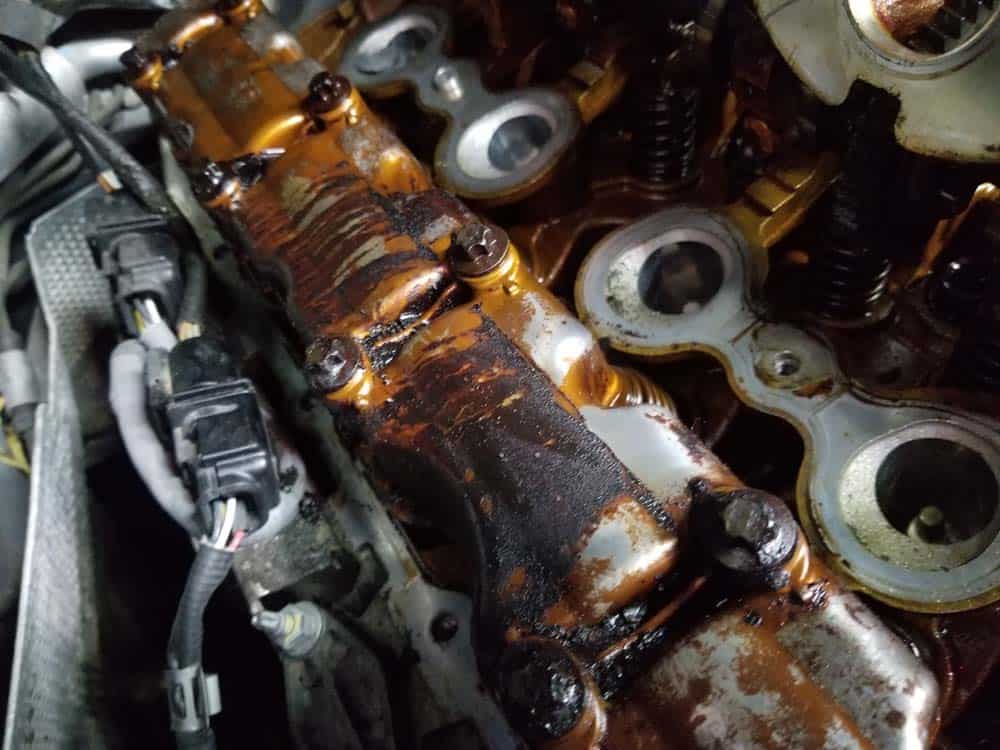
BMW certified oil doesn’t cost any more than non-certified oil. Furthermore, it is readily available at most major auto part retailers, so there is no excuse not to use it. If you aren’t into changing your own engine oil, then take your vehicle to the BMW dealership. Believe it or not, BMW dealerships have lately become very competitive with their oil service prices. I personally am not a fan of the local “jiffy lube” drive-through oil change facilities, simply because they use inferior products to keep their prices down.
If you are unable to perform your own engine oil change and are afraid of going to the dealership, then I suggest asking your local jiffy lube or repair shop if you can BYOO (bring your own oil). Most oil change facilities we have talked to have no problem with it and will just charge you a reasonable fee for the labor of changing it.
The BMW Repair Guide recommends changing your motor oil every 5,000 miles to keep your engine protected and running at its peak performance.
[amazon table=”36457″]2. Service the Coolant
One of the most neglected systems in your BMW is the coolant system. Most repair shops just check it and “top it off” when you bring your car in for service. Many owners have been mistakenly led to believe the engine’s coolant system has a “lifetime” fill and never needs to be replaced. Nothing could be further from the truth.
The coolant in your BMW is highly susceptible to thermal shock – a condition that degrades the fluid by rapidly subjecting it to intense heat fluctuations (like when starting a hot engine after the coolant has dropped in temperature). Over time, thermal shock causes the ethylene glycol (the main component of engine coolant) to decompose into organic acids which dissolve metallic parts, literally destroying your BMWs cooling system from the inside out.
Not replacing your coolant in a timely manner can cause expensive damage to the engine including the radiator, coolant hoses, oil cooler, transmission cooler, and other internal components associated with the coolant system. The following image shows what thermal shocked coolant does to an oil cooler in a 2006 530xi. I literally had to replace most of the cooling system because of this.
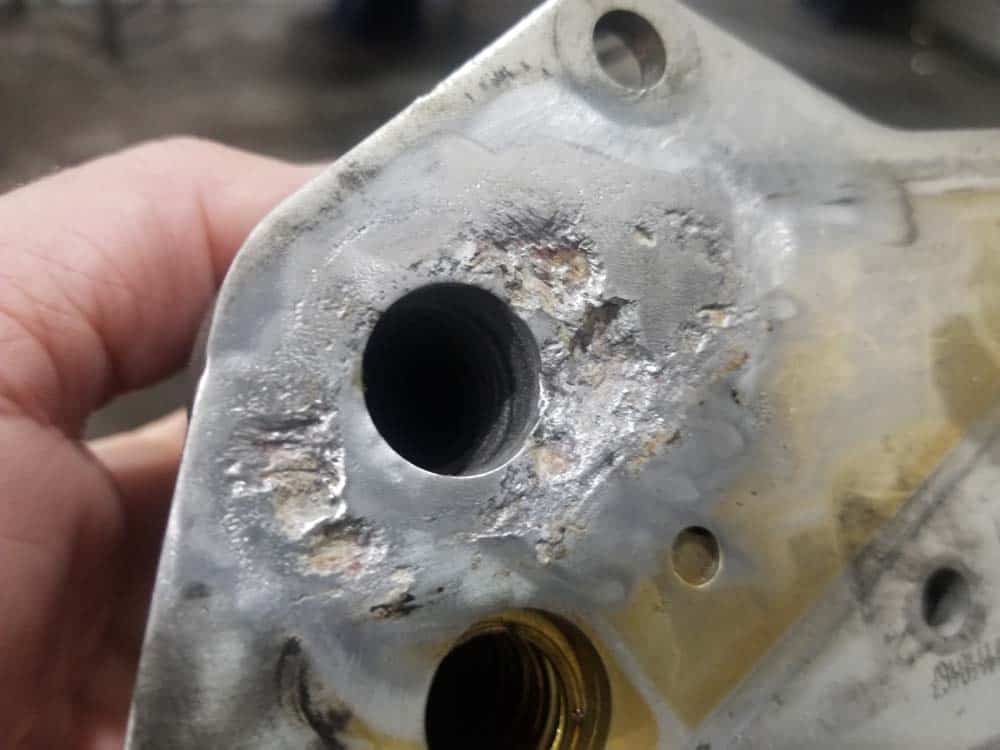
So how often should you change the coolant as part of your regular BMW maintenance?
This is a subjective question whose answer is based on how you drive your vehicle. For daily drivers that put 15,000 or more miles a year on their vehicle and do a lot of “start and stop” driving, the BMW Repair Guide recommends that your vehicle’s engine coolant should be completely drained and replaced every 2 years. Vehicles that are used less can adjust that schedule accordingly, but under no circumstances should you go over 5 years without changing your coolant…even if the car just sits in the garage.
If any type of corrosion or scaling is observed, the coolant system should also be flushed with a good radiator cleaner like LiquiMoly. Always refill your coolant system with Genuine BMW Anti-freeze/Coolant mixed 50/50 with distilled water.
Doing a coolant flush on your BMW is very straightforward, and is definitely doable for the home mechanic with average ability. The toughest part of a coolant flush is draining the system; most engine blocks must be drained by disconnecting the engine return line from the thermostat which is located directly under the front end of the vehicle. This requires the vehicle to be raised and to be level (or tilted slightly forward).
If you do not have the ability to safely raise all four wheels of your BMW, then it may be a better idea to let your local repair shop handle it.
3. Service the Drivetrain
In the words of the late comedian Rodney Dangerfield, the drivetrain on most BMWs gets absolutely “no respect”. Not only are most owners unaware that it’s vital for every BMW maintenance plan, they also don’t notice there are several different components involved depending on what model you are driving.
The BMW drivetrain includes the transmission, the rear differential, and if you are driving an all-wheel xDrive model, the front differential and transfer case. Thanks to an obscure label that was attached to BMW transmissions over the years stating it contained “lifetime oil“, many owners have been led to believe the transmission fluid never needs to be replaced.
This is very, very wrong.
The drivetrain on your BMW endures daily punishment beyond comprehension, especially in those vehicles that are driven “aggressively”. Not changing the fluid in your drivetrain components can cause premature gear wear and transmission/transfer case failure.
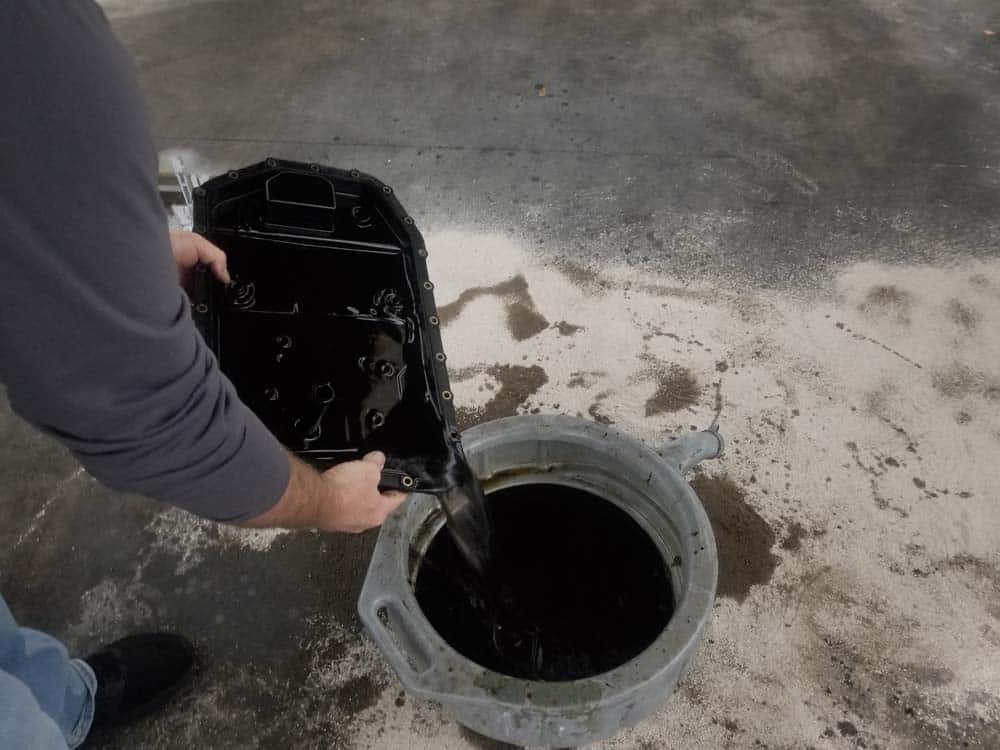
Like the coolant system, when you should service your drivetrain is subjective based on your driving style. If you navigate traffic in your BMW like a formula one driver, we suggest doing a fluid change on all of the components of your drivetrain every 50,000 miles.
If you are a more conservative driver, you can adjust that mileage accordingly. But under no circumstances should you ever drive more than 100,000 miles without servicing the transmission and differential (including front differential and transfer case on xDrive models).
Servicing your drivetrain requires lifting the vehicle up and removing the pan from the bottom of the transmission. It can be a complicated process trying to do this on your back, so most home mechanics would be better off just taking it to their local repair shop. For those “do it yourselfers” that have the ability to work under their vehicle efficiently, servicing your drivetrain is very simple and can save a lot of money.
Just be sure to follow our instructions on refilling your transmission with fluid and resetting the adaptations (if applicable – refer to any of our transmission articles for details). Not refilling your transmission properly can cause it to shift erratically.
4. Engine Tune-up
An engine tune-up is a fancy term for replacing the spark plugs and coils as apart of regular BMW maintenance. The spark plugs and coils are part of the ignition system and are responsible for igniting the air/fuel mixture in the engine’s cylinders. Even though they are fairly robust and have a low failure rate, they still need to be replaced at regular intervals to keep your vehicle running smoothly and avoid wear and tear.
Classics signs that your BMW is ready for a tune-up are a rough idle, cylinder misfires, and generally overall poor performance. The main problem that arises from all this is if the air-fuel mixture in your engine is not being properly burned, deposits can form in the valves. If these deposits become bad enough, the engine head(s) will need to be removed and the valves cleaned…a very expensive and technically difficult procedure.
Replacing your spark plugs and ignition coils before they wear out is a great way in preventing valve wear and keeping the dreaded Service Engine Light (SEL) from appearing in your instrument cluster.
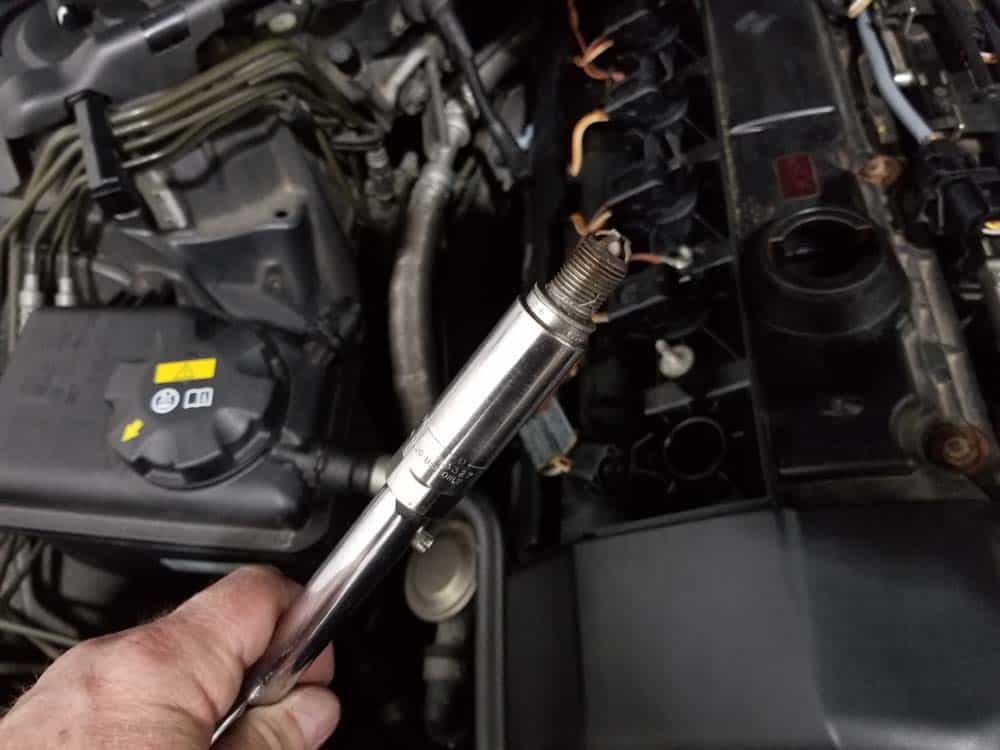
The recommended timeframe for replacing your spark plugs and coils differs among BMW engines. High-performance engines, like the one found in the M3, have shorter tune-up intervals…usually around 30,000 miles. The iconic inline six-cylinder engines found in most of the vehicles produced up to 2013 usually do not require a tune-up until 60,000 miles.
Your best bet in determining when your spark plugs and coils need to be replaced is to read the BMW Service and Warranty Book for your vehicle.
Changing out the spark-plugs and ignition coils on most BMW four and six-cylinder models is very simple and can be performed by even novice home mechanics. Eight cylinder engines pose more of a challenge, simply because of the confined space inside the engine compartment requiring more parts to be removed for space.
5. Fuel Delivery System Service
The fuel delivery system in your BMW consists of the fuel pump, the fuel filter, and the fuel injectors. All of these components must be serviced in order for your engine to run properly and to avoid any check engine lights.
The fuel pump in your BMW is an electronic component that usually fails with little notice, leaving owners stranded with no evidence as to why. A dirty fuel filter and clogged fuel injectors can cause a host of issues including rough idling engine, poor acceleration, and overall bad performance.
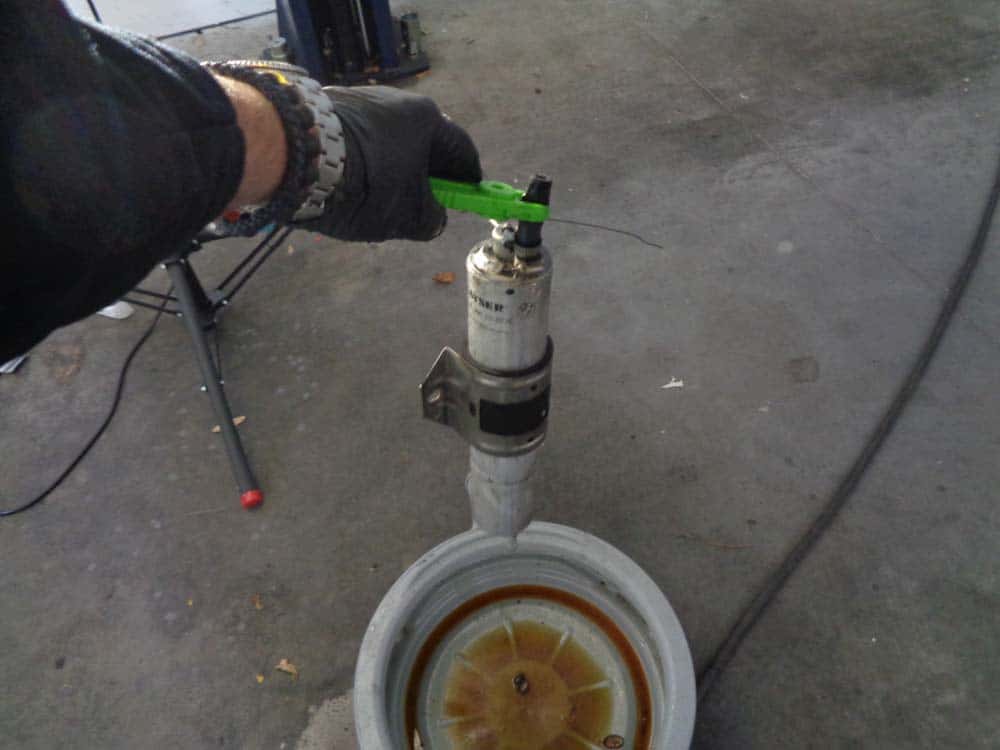
Other than replacing the fuel injectors, there is little documentation online as to when your fuel system should be serviced. As far as standard BMW maintenance goes, we recommend replacing your fuel filter every 50,000 miles, and your fuel pump and fuel injectors at 100,000 miles. This may seem like overkill, but when you become stranded in the grocery store parking lot with a trunk full of food you will be glad you did.
The complexity of replacing the components of your fuel system differs among models, but generally speaking, it is a fairly straightforward procedure for the savvy home mechanic. The fuel pump and fuel filter/sending unit are usually located under the rear seat and are easily accessible. Although it can be intimidating at first, removing the fuel injectors is actually very easy once you get to them. For those who are not comfortable doing it themselves, any automotive repair shop can do the job.
There is no need to go to the BMW dealership to service your fuel delivery system.
So where do I go from here?
Before starting any of the BMW maintenance repairs above, try determining the last time your vehicle was serviced. If you purchased a pre-owned BMW with no service records, I would recommend you start at “ground zero” and assume nothing has been done. If you do have service records, or your BMW has just come off of the factory maintenance program, you can easily put together a plan of action based on your model and the mileage.
But most importantly….relax and enjoy your car. Although we drive a fine European brand that needs a lot of attention, at the end of the day it is still just an automobile. Keep it properly serviced and it will give you many years of enjoyment.

